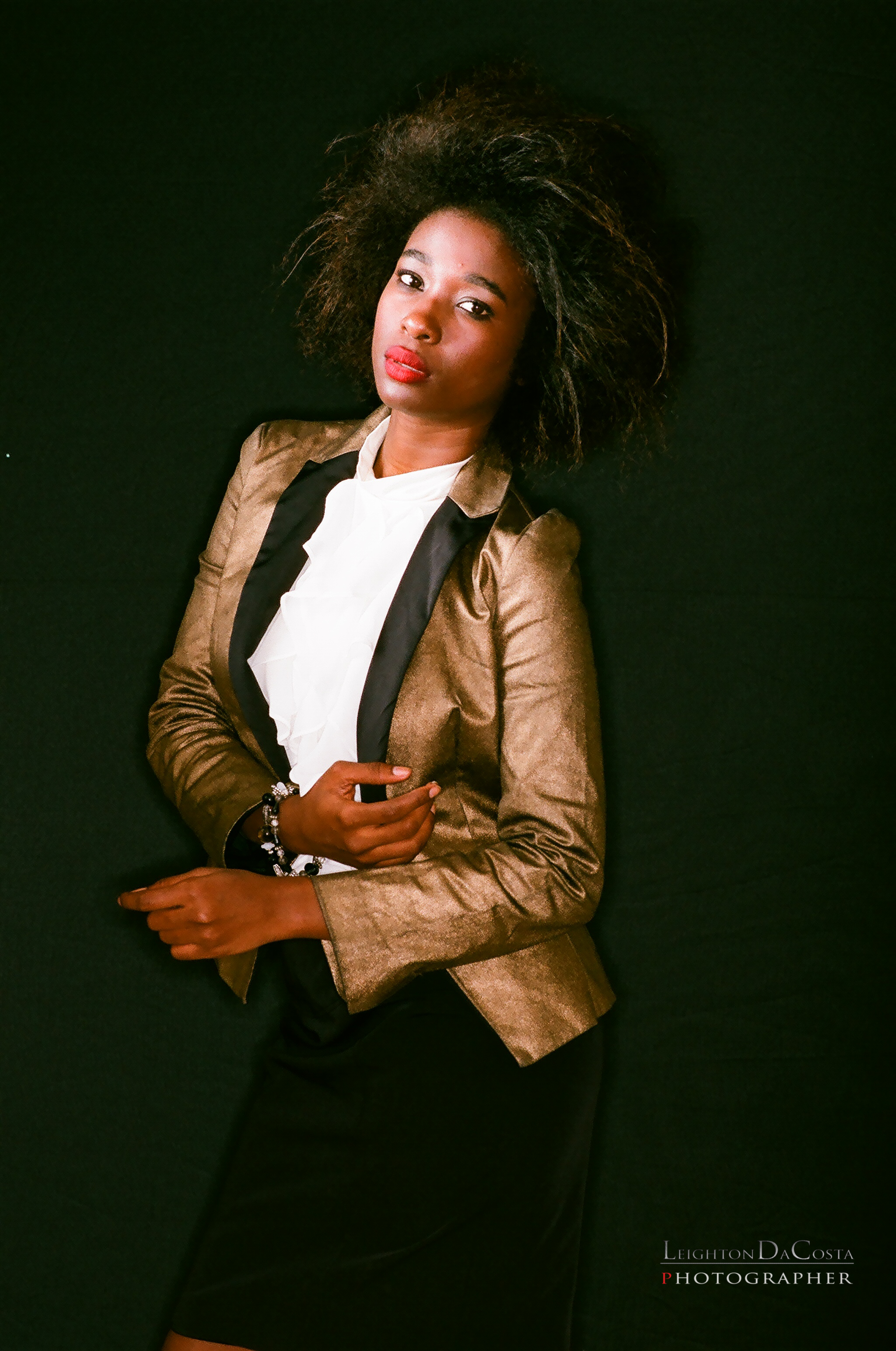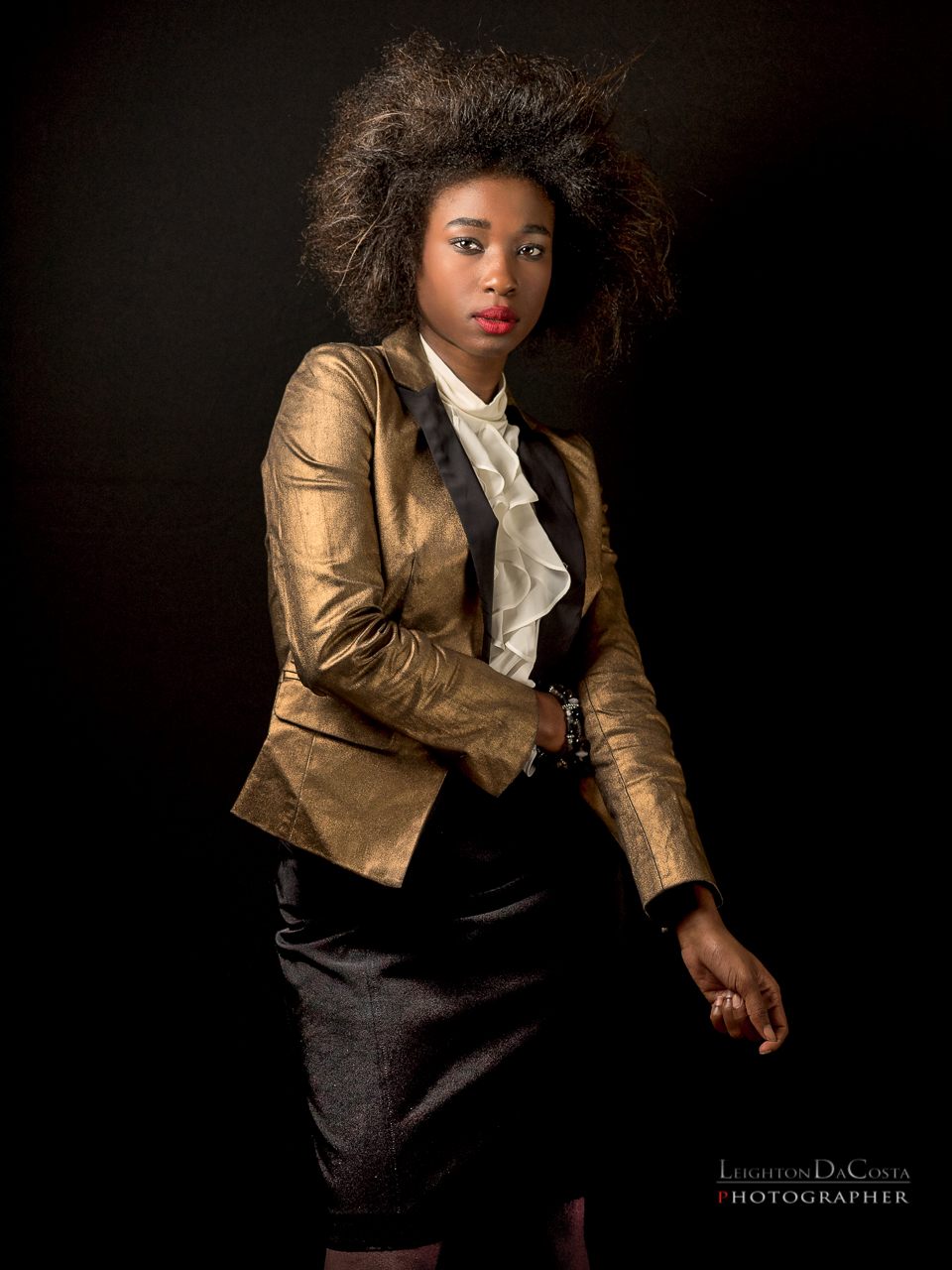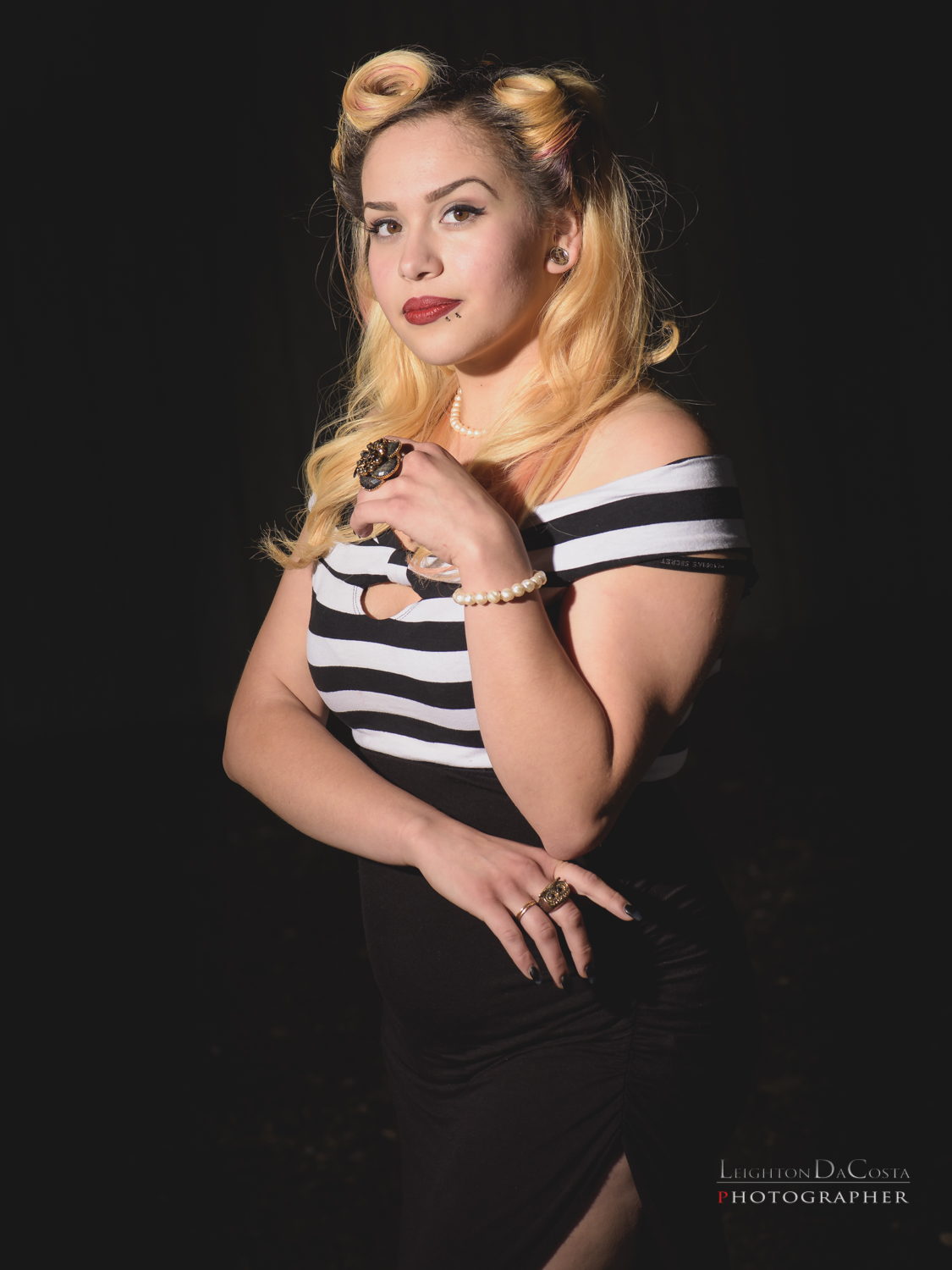My Push for Film While Staying Digitally Loyal
The Beautiful Taina photographed with 400ISO Superia Fujifilm. Pembroke Pines, FL. Processed by Dale Laboratories, Hollywood, FL.
#FIND: Film Is NOT Dead. In the current day and age of digital cameras, with the convenience and consistency that comes with them, why would ANYONE continue to create photographs on film? I ask myself this all the time. Digital, while being the "way of the future," is simply put, "better" for the customer.
Photographing digitally allows me to make focus, lighting, color temperature, perspective changes all on the fly to create a consistent product. Photographing digitally, allows me to proof images MUCH faster than when I photograph with film. This allows the client to make purchase decisions sooner and which accelerates the ordering process.
The images to the right show the difference between film and digital capture. Can you tell the difference? I do not do my own film processing, so with the film, the white blouse is over exposed, whereas on the digital exposure, I was able to go in post and correct the exposure in less time than it took for me to drop my film off.
In another example, I have used a digital image to simulate the look of film. Were you able to tell the difference? This is another example of why I REALLY enjoy shooting film. The (x)=f/n factor. What does that mean? Simply put, the additional variables to photographing with film. No two rolls are the same. The age of the film, storage methods, and other things can change the final look of the exposure.
In the images to the left, the image with her arms below her waist, is the film image. The giveaway is the color of the background in relation to the actual color temperature of the subject. In the digital image, the background is more of a neutral color, while the film exposure shows the green tones.
Another reason why I enjoy using film, is when I am photographing boudoir and fine art nudes for clients. While all images can be digitally scanned, using film does add a certain level of security. There is a very finite origin of the image. The Negative. There is a sense of immortality with a digital file, which is not there with a negative. Let me explain. The digital file, can be lost, deleted, manipulated; but it also can be reproduced, and live forever in the cloud. It is very hard to put back in the jar once released. The film negative, once gone, is gone. The negative can be in possession by only ONE entity, usually either the photographer, or the client. It is hard for that negative to be "accidentally" released. While I have many safeguards in place for my clients and models who I have photographed nude, hacking, theft, and even clients who have separation/divorce are always a threat to discretion.
The lovely Martha photographed with Fujifilm 400ISO Superia. Salt Lake City, UT. Processed by Dale Laboratories, Hollywood, FL.
Film photography is growing more and more everyday. Is it fad or trend? I don't know. I do know that many professionals have added the use of film to their offerings to better serve the clients who demand the more artistic medium.
Some things to keep in mind when requesting film photography:
- FILM IS EXPENSIVE. The average roll of professional film can range from $8-40 a roll depending on size. A 36 exposure black and white roll of film may be $8, while a 12 exposure color roll of Medium format film, may be close to $35. When hiring a photographer who captures with film, expect a premium for the service.
- Film requires PATIENCE. Remember when we had the one hour Fotomat? This is not really the case with professional processing. The average lab turnaround could be as much as 72 hours not including transit time, longer for special services.
- Film is AESTHETIC. In the 21st century, film is used for the process and the "look." The look is unique and random, and so may be the results from frame to frame. Think of a high end steakhouse. Medium Rare should ALWAYS be Medium Rare, but the degree of rare will vary between cuts. The size and weight of the cuts will also vary. But the consistency is in the experience and the flavor. The same as the style and look should be consistent to the artist/photographer capturing the images.
Film photography is still fun. It is relaxing and sometimes frustrating, all at the same time. Sometimes not having to look at the back of the camera, allows for more interaction with the subject, which often leads to great images with character. I would offer for any photographer looking for a new challenge, to pick up a film camera, and take some time during a session to do a little film photography. You may be in for a pleasant experience... for you AND your subject.









